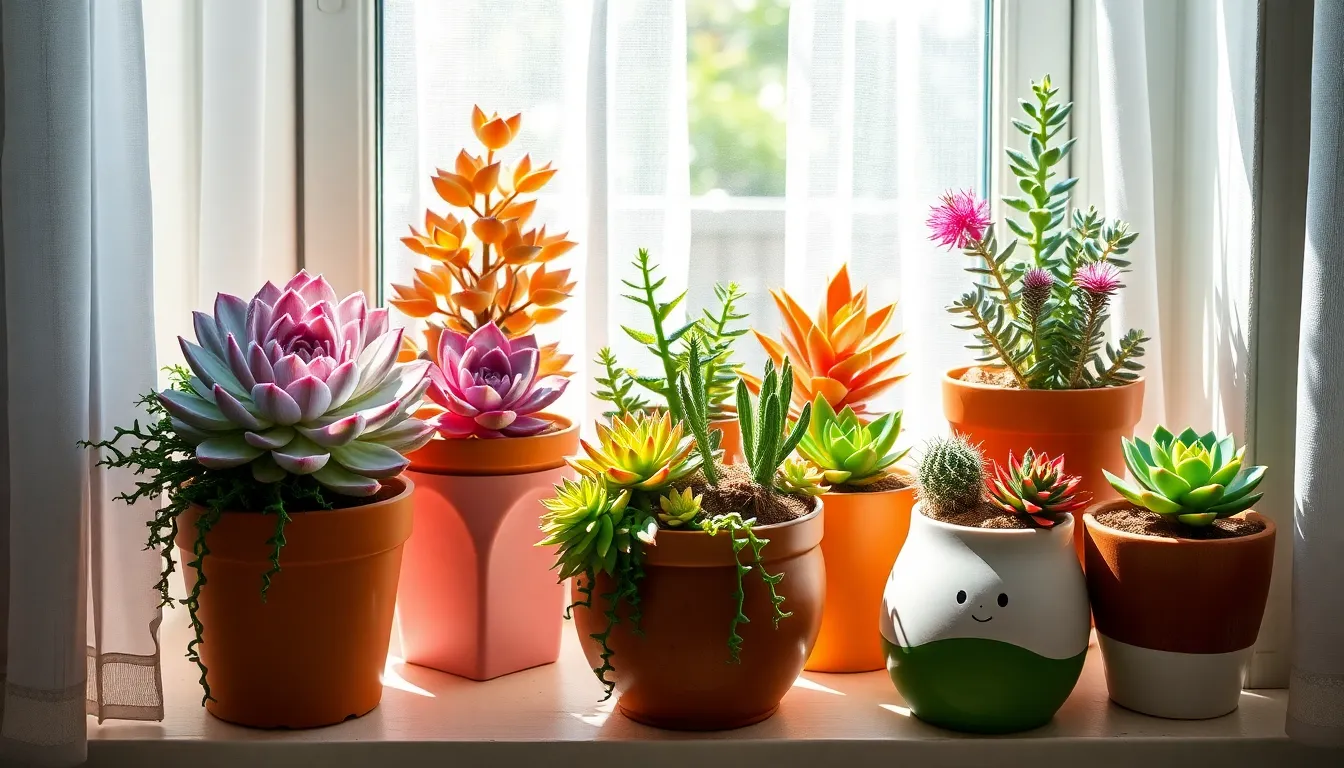Welcome to the delightful world of succulents, where vibrant greens and intriguing shapes meet minimal maintenance, making them the perfect companions for both novice and seasoned gardeners. As living sculptures, succulents offer not only an aesthetic appeal that can transform any space but also a forgiving nature that thrives on neglect, turning them into an ideal starting point for those new to plant care.
For beginners, succulents serve as a gentle introduction to the joys of gardening, offering a rewarding experience without overwhelming demands. Experienced gardeners, too, will find joy in the diverse array of species, each with its own unique charm and character, providing endless opportunities for creative arrangements and displays.
In this article, you’ll discover a selection of easy-to-grow succulents that cater to varying levels of sunlight and care, making them suitable for any living environment. We’ll guide you through the essentials of succulent care, from watering techniques to soil selection, ensuring your new leafy friends not only survive but thrive. Let’s embark on this green journey together, where every leaf tells a story, and every plant becomes a testament to your growing green thumb.
Choosing Beginner-Friendly Succulents
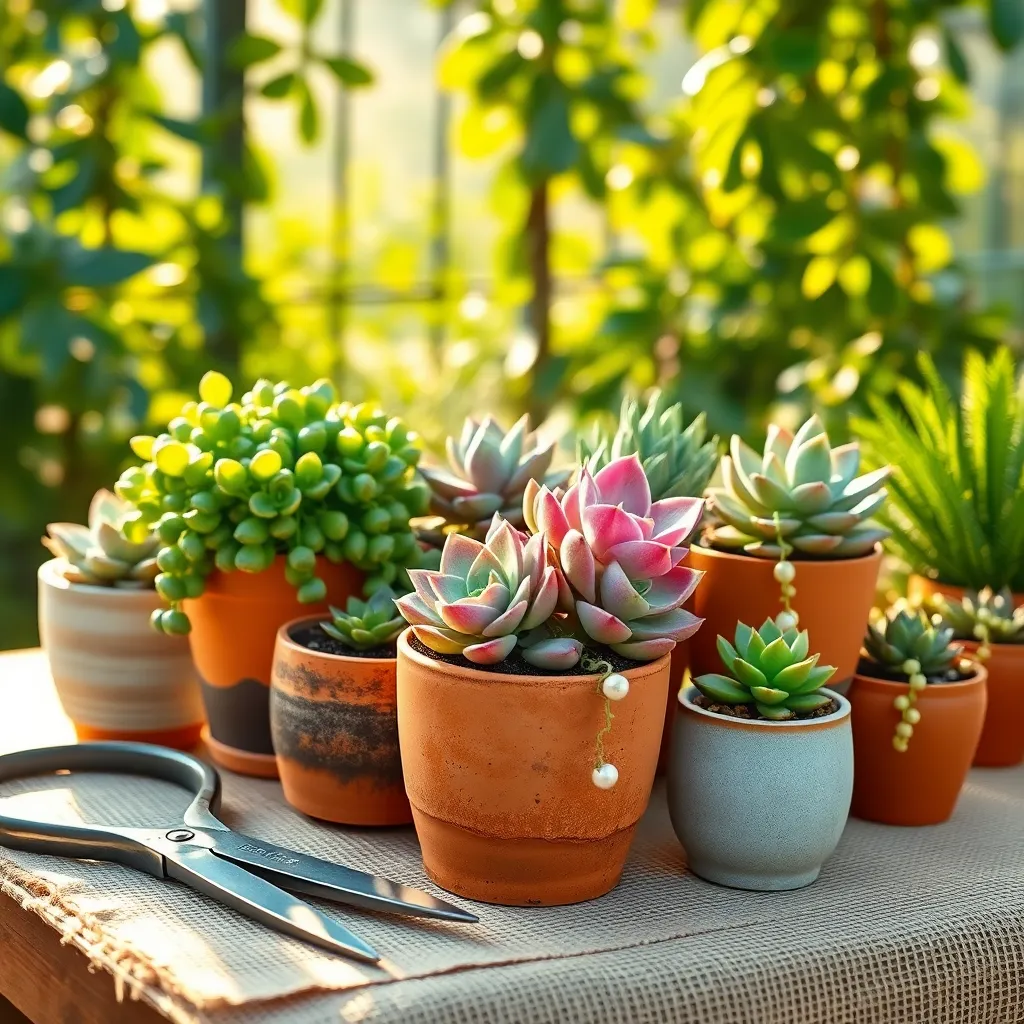
When selecting succulents as a beginner, it’s essential to choose varieties known for their resilience and low maintenance. Aloe vera is a popular choice because it requires minimal care and can thrive in indirect sunlight.
Another excellent option is the Jade Plant, which is known for its ability to adapt to various lighting conditions. Water it sparingly, allowing the soil to dry out completely between waterings to prevent root rot.
Consider the Haworthia as an easy-to-grow succulent that can tolerate low light, making it perfect for indoor settings. It thrives in well-draining soil, like a cactus mix, which helps prevent overwatering issues common among beginners.
For those interested in a splash of color, the Burro’s Tail offers cascading green leaves that are both visually appealing and easy to maintain. Ensure it receives bright, indirect light and place it in a hanging pot to showcase its trailing stems.
Ideal Soil Mix for Succulents
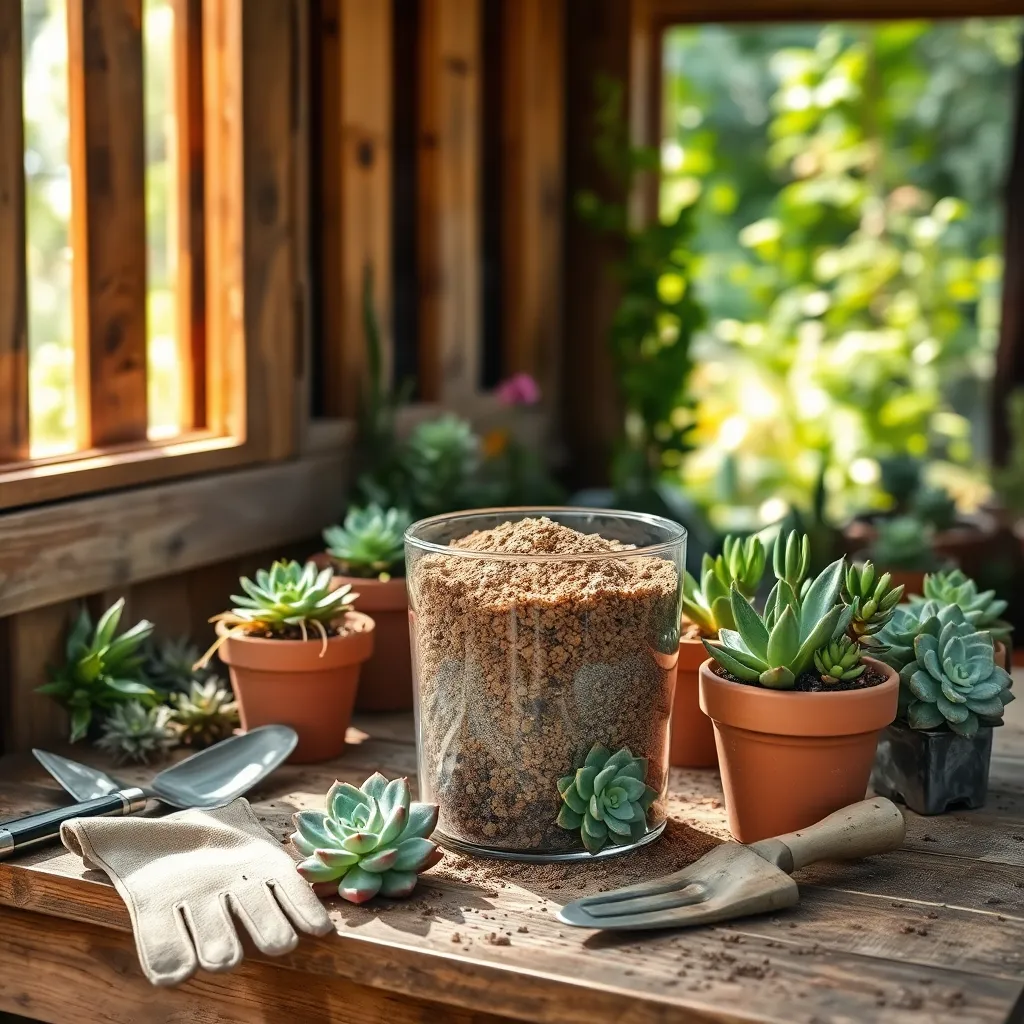
Succulents thrive best in a well-draining soil mix that closely mimics their natural desert environment. The ideal soil mix for succulents is gritty and porous, allowing water to move through quickly to prevent root rot.
To create the perfect soil mix, combine equal parts of potting soil, coarse sand, and perlite or pumice. This combination ensures excellent drainage while retaining enough moisture for the succulents to absorb.
For those who prefer pre-mixed options, a commercial cactus or succulent mix is a great choice, often containing the necessary components for healthy growth. When using these mixes, monitor watering closely, as they may retain moisture differently than homemade blends.
Advanced gardeners might experiment by adding crushed granite or a small amount of coconut coir to the mix for enhanced texture and aeration. These additions can improve the soil’s structure and make it even more conducive to succulent health.
Sunlight Needs for Healthy Growth
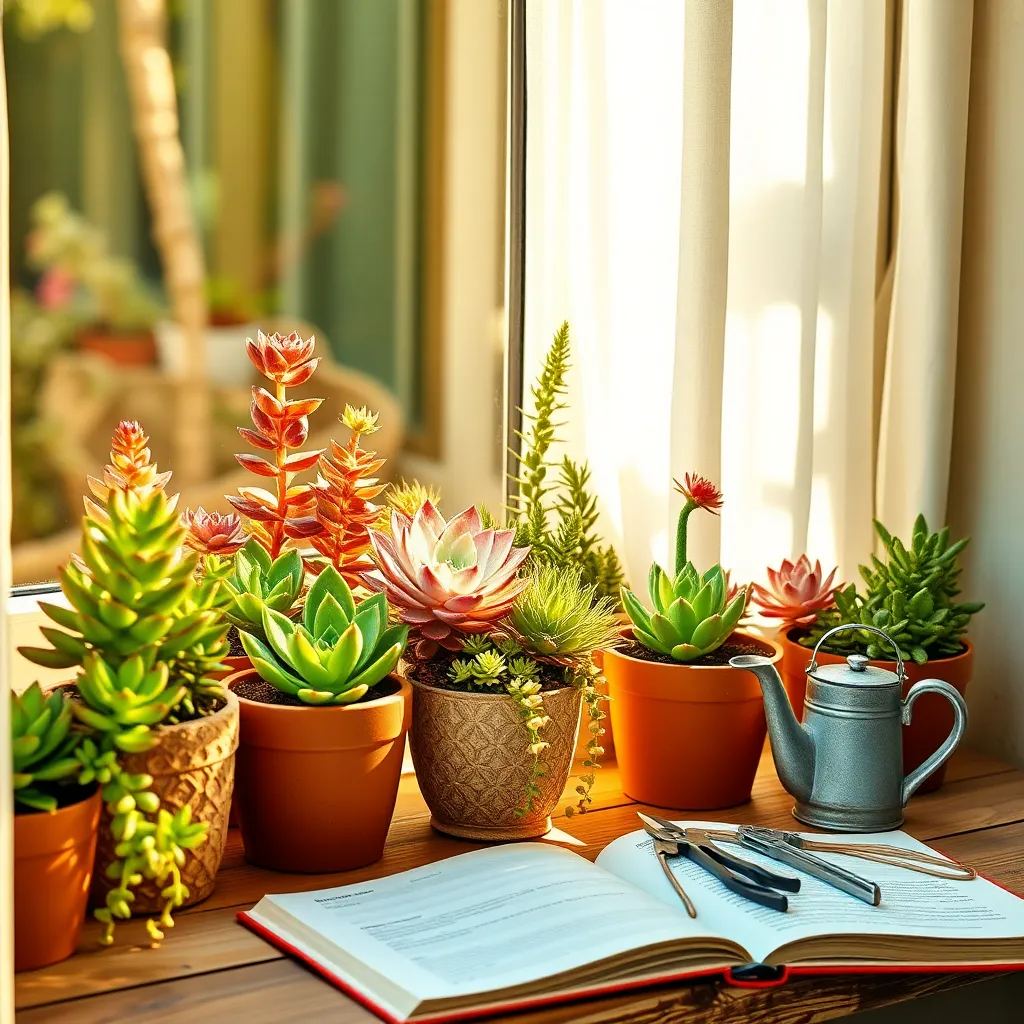
Succulents thrive when they receive the right balance of sunlight, making it crucial for their healthy growth. Most succulents prefer bright, indirect light, so placing them near a south or east-facing window is ideal for indoor growing.
It’s important to monitor your succulents for signs of inadequate lighting, such as stretching or pale colors. If you notice these signs, gradually increase their sun exposure to prevent sunburn, which can damage the plant.
For those with outdoor succulent gardens, ensure they receive morning sun while being shielded from harsh afternoon rays. You can achieve this by using a shade cloth or positioning them under taller plants, which provide filtered sunlight.
Advanced gardeners might consider rotating their succulents every few weeks to ensure even growth on all sides. This technique helps prevent the plants from leaning toward the light source, maintaining a balanced shape.
- Observe your succulents for signs of distress and adjust their light exposure accordingly.
- Use a grow light if natural sunlight is limited in your space.
- Remember, gradual adjustments are key to avoiding sudden stress on your plants.
Simple Watering Tips and Tricks
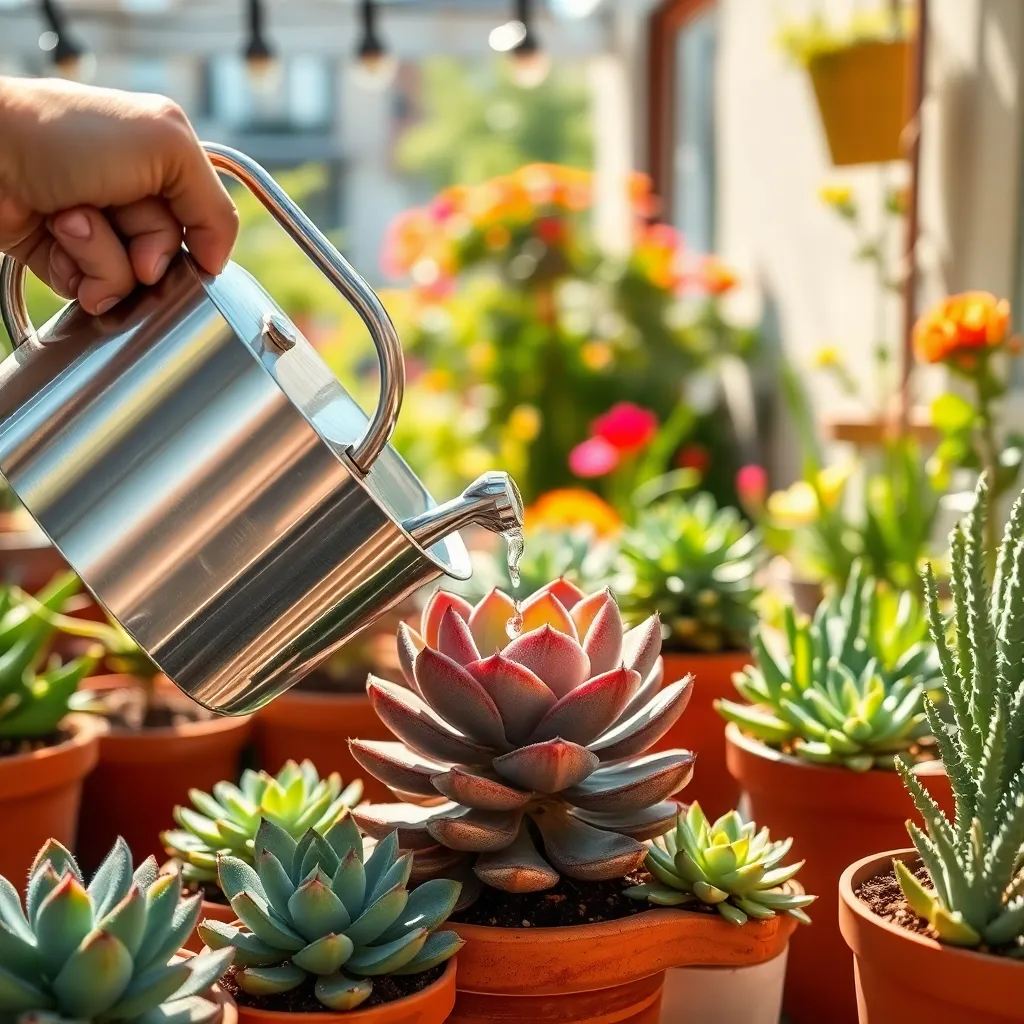
Watering succulents properly is crucial for their health and growth. These plants store water in their leaves, so they don’t need frequent watering like other houseplants.
To determine when to water, touch the soil about an inch below the surface. If it’s dry, it’s time to water; if it’s still moist, wait a few more days.
Always use well-draining soil with a mix of sand, perlite, or pumice to prevent root rot. This type of soil helps excess water drain quickly, mimicking the arid environments succulents thrive in.
Consider watering from the bottom to encourage strong root growth. Place the pot in a shallow tray of water and let the soil soak up moisture for about 30 minutes.
In winter, succulents enter a dormant period and require even less water. Reduce your watering frequency during these months, ensuring the soil dries out completely between waterings.
Troubleshooting Common Succulent Issues
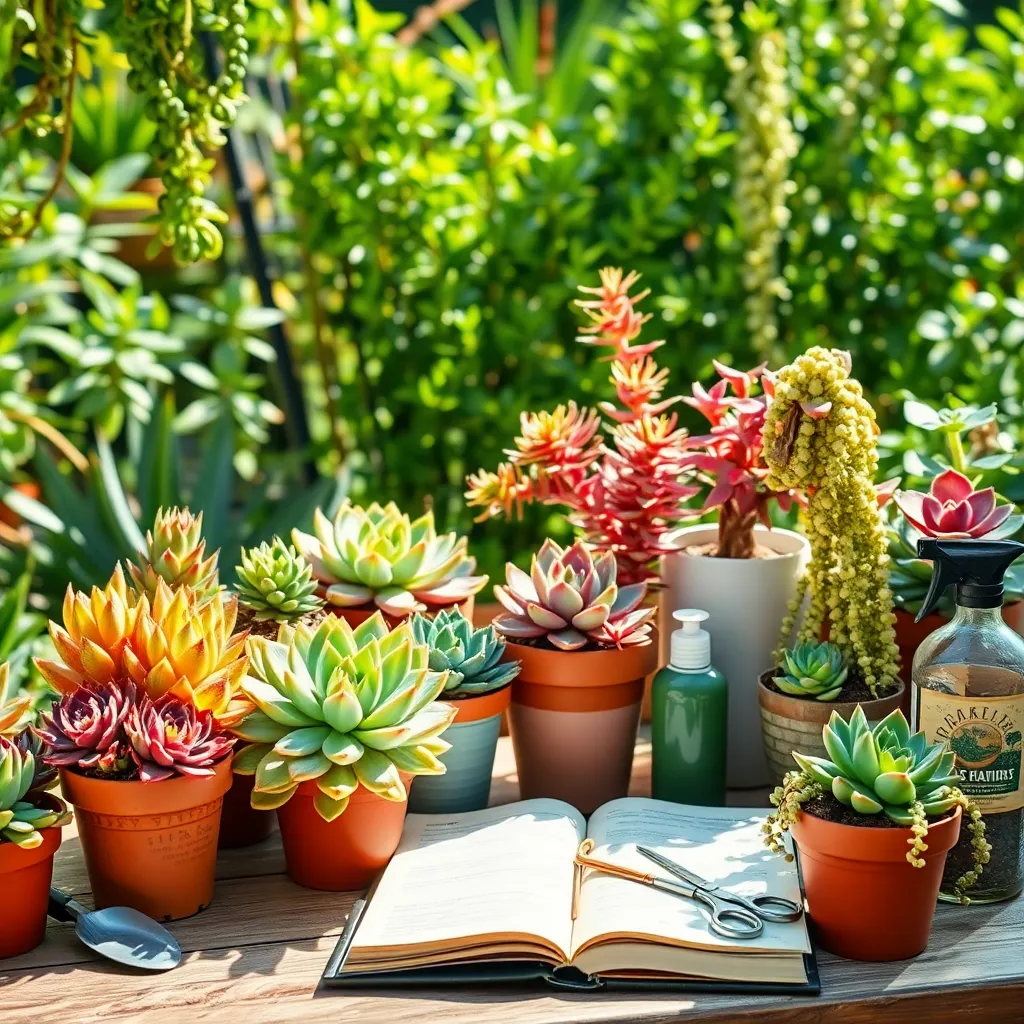
Succulents are known for their resilience, but they can still encounter issues that require attention. If you notice your succulent leaves turning yellow, it is often a sign of overwatering. Allow the soil to dry out completely between waterings, ensuring that the pot has good drainage to prevent root rot.
Another common issue is leggy growth, where the succulent stretches out in search of light. To combat this, place your plant in a spot where it receives bright, indirect sunlight for at least six hours a day. If natural light is insufficient, consider using a grow light to supplement the lighting needs.
While succulents are generally pest-resistant, they can occasionally suffer from infestations like mealybugs. If you spot these tiny, cotton-like insects, gently wipe them off with a cotton swab dipped in alcohol. Keeping your plants clean and free of debris can also help prevent pests from taking hold.
Soil choice is crucial for healthy succulents, as the wrong type can exacerbate problems like overwatering. Use a well-draining cactus or succulent mix, or create your own by combining standard potting soil with sand or perlite. For advanced gardeners, adding a layer of gravel at the bottom of the pot can further improve drainage.
Conclusion: Growing Success with These Plants
In the delightful journey of nurturing both plants and relationships, “Easy-to-Grow Succulents for Beginners” has illuminated five key concepts: the importance of patience, the balance of giving and receiving, understanding individual needs, celebrating growth, and adapting to change. Each of these principles not only fosters thriving succulents but also cultivates healthy relationships. Now, take an actionable step—choose one succulent that resonates with you and commit to nurturing it, observing how these relationship concepts apply.
As you embark on this green-thumbed adventure, remember that growth in any relationship, much like with succulents, requires time, attention, and love. Bookmark this article to revisit these insights and reminders whenever you feel your relationships could use some nurturing.
With this knowledge, you are empowered to cultivate more meaningful connections, both with your plants and the people in your life. Let these principles guide you toward relationship success—where every interaction blooms with understanding and care. Save this article as a trusted guide, and watch as your relationships flourish in the warmth of your newfound wisdom.

